Fundamental Insights
#1 ERC-721 Variant

Projects are customizing ERC-721 based on their use cases. Azuki released ERC-721A to further reduce the costs of minting NFT sacrificing read speed. There are more than 40 projects using ERC-721A, like Cereal Club, X Rabbit Club, and The Women of Crypto. Here is a gas fee comparison:

From the chart, the base minting fee halves. Minting multiple NFTs only increases few gas.
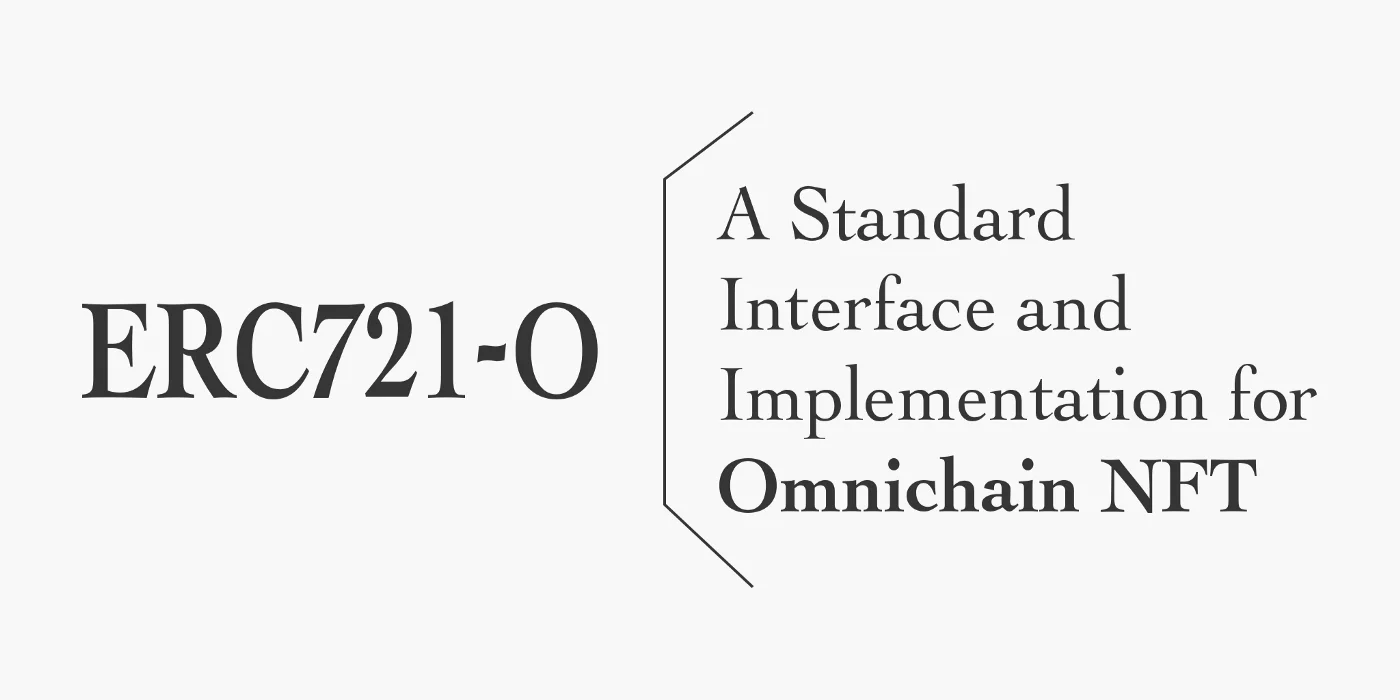
We discussed LayerZero and Omnichain NFT last week. This week, we saw ERC-721O boosting the development speed of Omnichain NFT. ERC-721O adds multiple cross-chain features integrated with LayerZero. Here is a comparison between ERC-721O and existing Omnichain NFT.
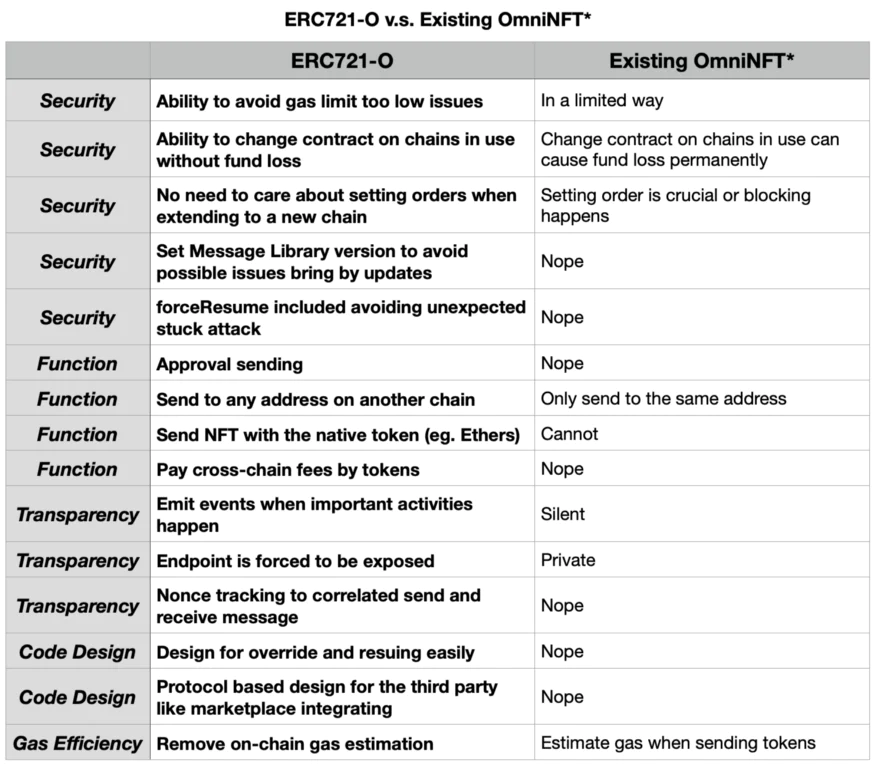
The improvements of ERC-721O are in security, functionality, and transparency. The purpose of this design is greatly different from ERC-721A which only slightly optimizes ERC721 and adds no additional features. Here are additional features for ERC-721O:
- Approval Transfer Support
- Pick your destination address
- Pay crossing chain fees with tokens
- Send NFT with native tokens
If you are also trying to implement an Ominchain NFT, ERC-721O will be a good starting point.
#1 ERC-721 Variant
Most NFTs are on ETH with high gas fees. Using certain blockchains means having the proper cryptocurrency to process transactions, such as ETH for Ethereum, BNB for BSC, etc. Smart contracts are not available on all blockchains, and those contracts may vary from blockchain to blockchain if it does have functionality. The essential role of cross-chains is to allow tokens and arbitrary data to be transferred from one network to another. They provide a compatible way to allow both sides to interoperate securely and provide a key component to develop a blockchain multi-chain network. In fact, for a fully interoperable metaverse, a stable bridging ecosystem is a key factor for success. For artistic NFTs, there may be a limited market, for practical NFTs, there are bound to be scenarios and markets for their use. As ETH itself cannot carry a large-scale NFT ecology, the current solution to this problem is mainly to adopt the Layer 2 approach for scaling, and another is to develop through multi-chain models, such as using cross-chain protocols like Anyswap and Multichain. With the development of multi-chains such as Solana, Heco and BSC, NFT assets on different public chains have started to grow.
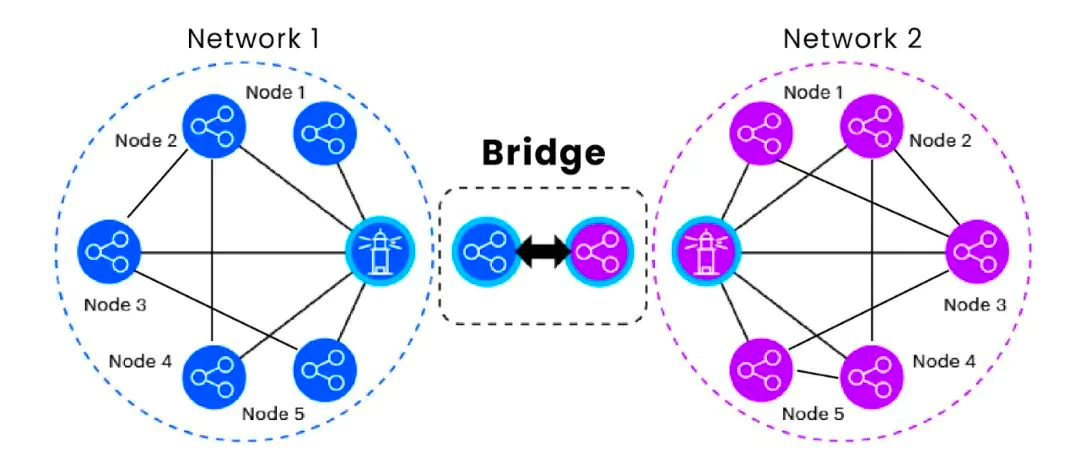
One popular solution is LayerZero. LayerZero is a cross-chain communication protocol that allows applications deployed on different chains to communicate with each other. Unlike cross-chain bridges that require intermediate nodes or consensus mechanisms, LayerZero allows applications to seamlessly communicate across chains. The first DEX on LayerZero is Stargate Finance, a project that allows Omni-chain assets to be swap across chains. Omni-chain is the trend for the application layer currently. The implementation of Omni-chain is LayerZero. Therefore, LayerZero may be the solution to deploy the project on multiple chains at the moment.
#3 Will network structures replace pyramid structures as the dominant form of human organization?
DAOs (and crypto-economics more generally) promise the ability to build collective intelligence at scale, but creating innovative organizations is not as simple as hiring intelligent people. Counterintuitively, sometimes the brilliance of the members does not affect the brightness of the team. More critical to collective intelligence is the relationship between members and how their interactions can effectively present and "compute" information.
The incentives opened up by smart contracts allow individuals to coordinate without a designated leader or any clear control structure. Each participant can make decisions based on their interests, and shared protocols tie them together, forming a swarm intelligence.
If guided by the right incentives, the self-decision of each member can be aggregated into a collective intelligence that far exceeds the capabilities of any hierarchical decision-making mechanism. Not only can each participant make decisions, but there is also fundamentally more information that can be processed within the DAO's network organization.
Hierarchy processes information linearly, making decisions from the top; network structures process information in parallel, where each node can contribute its intelligence.
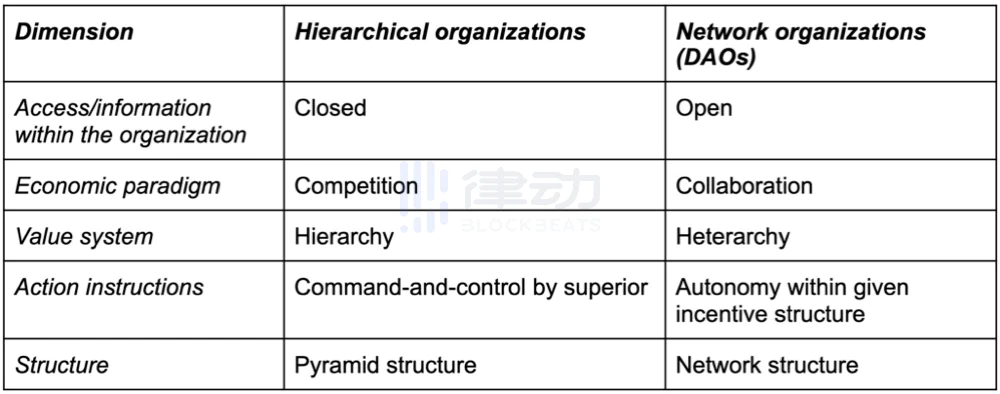
The table contrasts the traditional hierarchical institutional paradigm with the emerging network of organizational structures. Note: If access and information within an organization are open rather than closed, then the entire economic paradigm shifts from competition to cooperation. Since DAOs generally cannot hide or legally protect their innovations from being adopted by others, the only way is to keep moving forward.
Therefore, the DAO's winning strategy becomes further and faster innovation rather than building a "defensive moat" around past creations. It also motivates the members of the DAO to collaborate rather than compete with each other continuously.
Week's Recap
- Flipside Raises $50M
- Mintbase Raises $7.5M Series A + $5M Grants Pool to Pioneer Utility NFT Infrastructure
- The Sandbox gears up to raise $400 million at a $4 billion valuation: report
- Framework Ventures unveils $400 million fund with a special focus on blockchain gaming
- BATTLEBOUND SECURES $4.8M SEED ROUND + $3M IN NFT SALES
- Pantera Joins $3.7M Round for Solana Lending Protocol Hedge
- Ethereum scaling project Scroll raises $30 million from Bain Capital and others
- LimeWire raises $10 million in private token sale to grow music-linked NFT platform
- Bastion Raises $9M Series A Led by Three Arrows Capital
- Investors Poured $2.5B Into Crypto Games in Q1 2022: Report
- Vietnam’s NFT Project Secures USD2.5 Million Investment
- Solana DeFi Protocol Delta One Raises $9.1M to Offer Crypto Yield Farming
- Ethereum scaling project Scroll raises $30 million from Bain Capital and others
- NBA Top Shot Whale Launches NFT Lending Platform With $4.5M in Funding
Indicator Tracking
MVRV
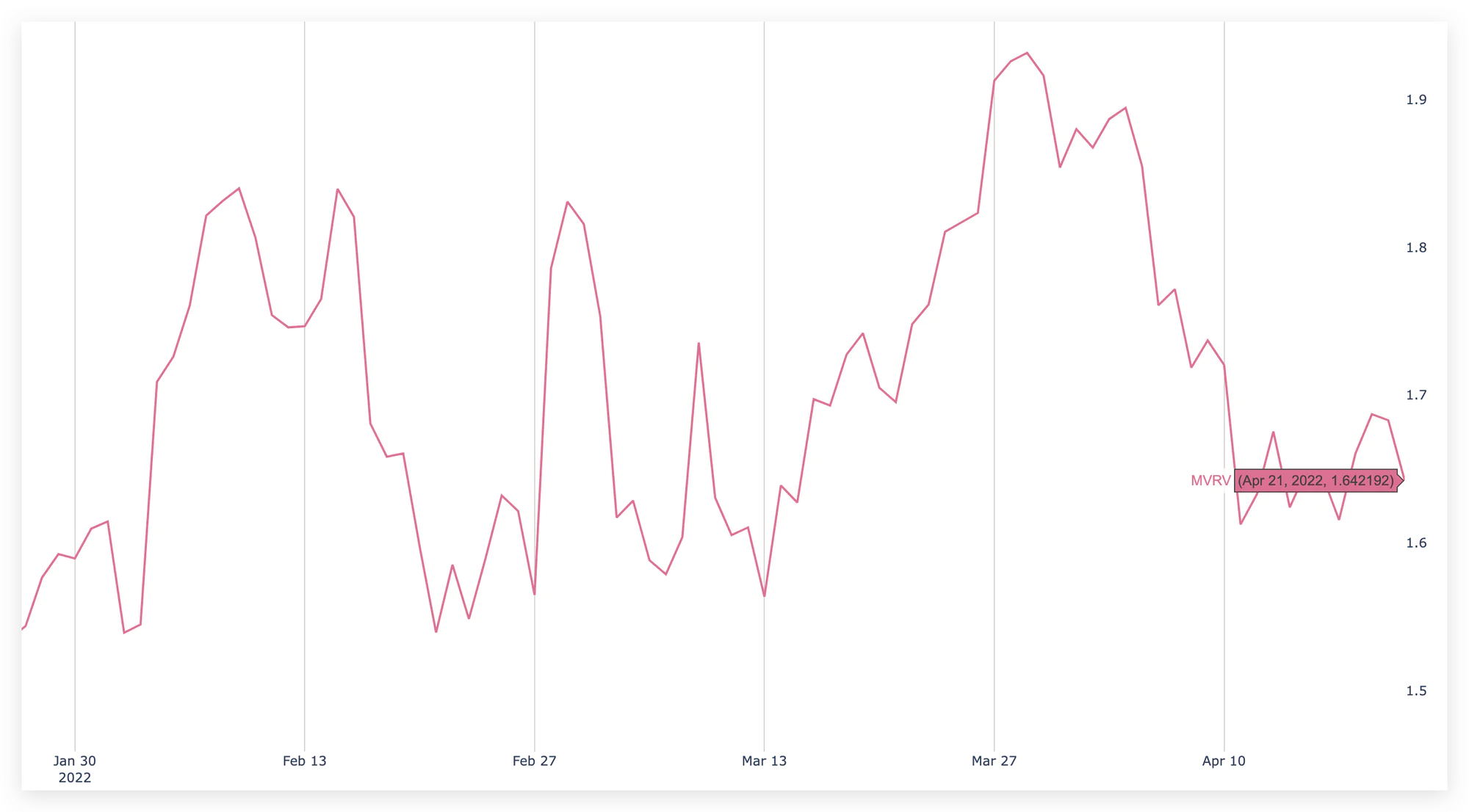
source: Coin Metrics
Crypto Fear & Greed Index
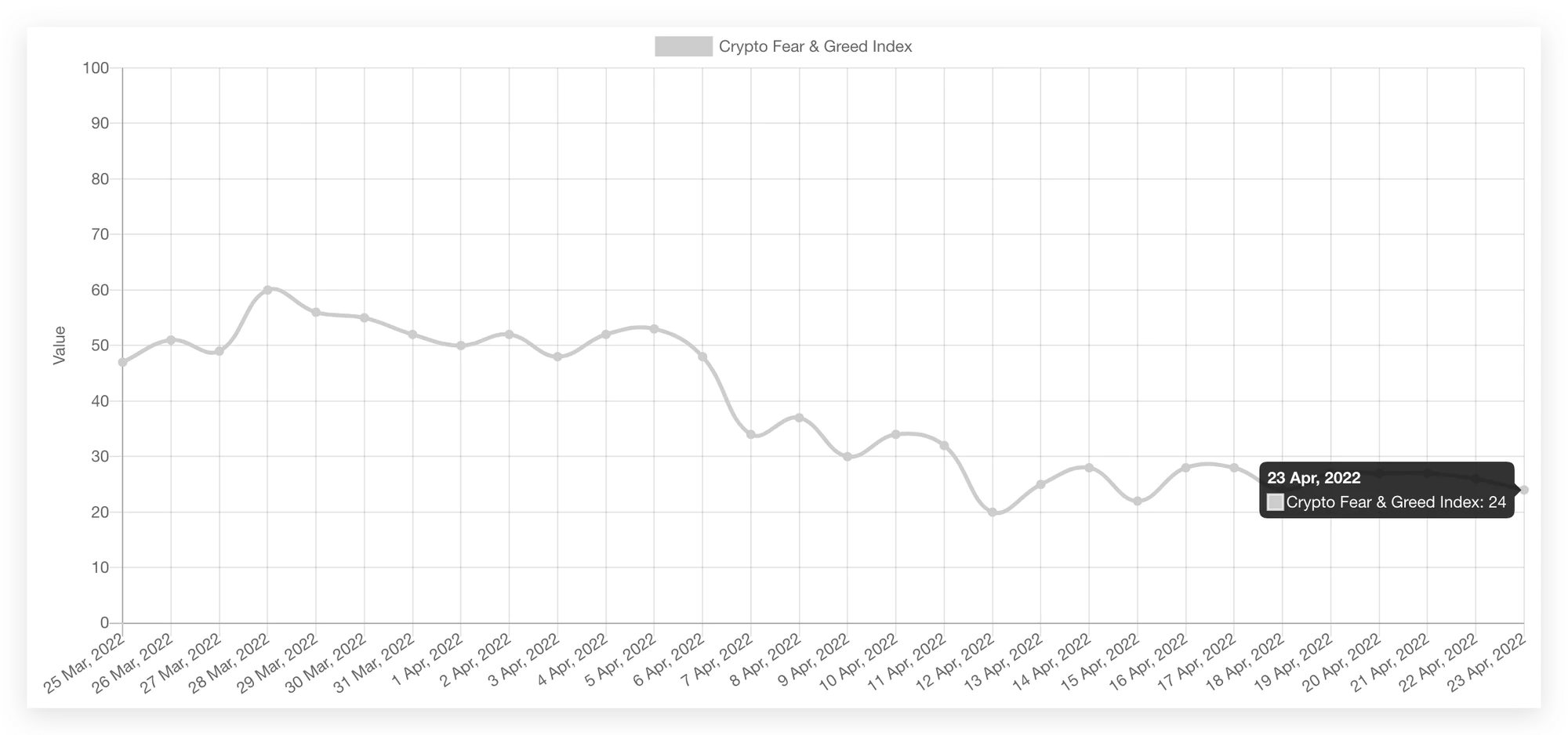
source: Alternative
Data of NFT Market
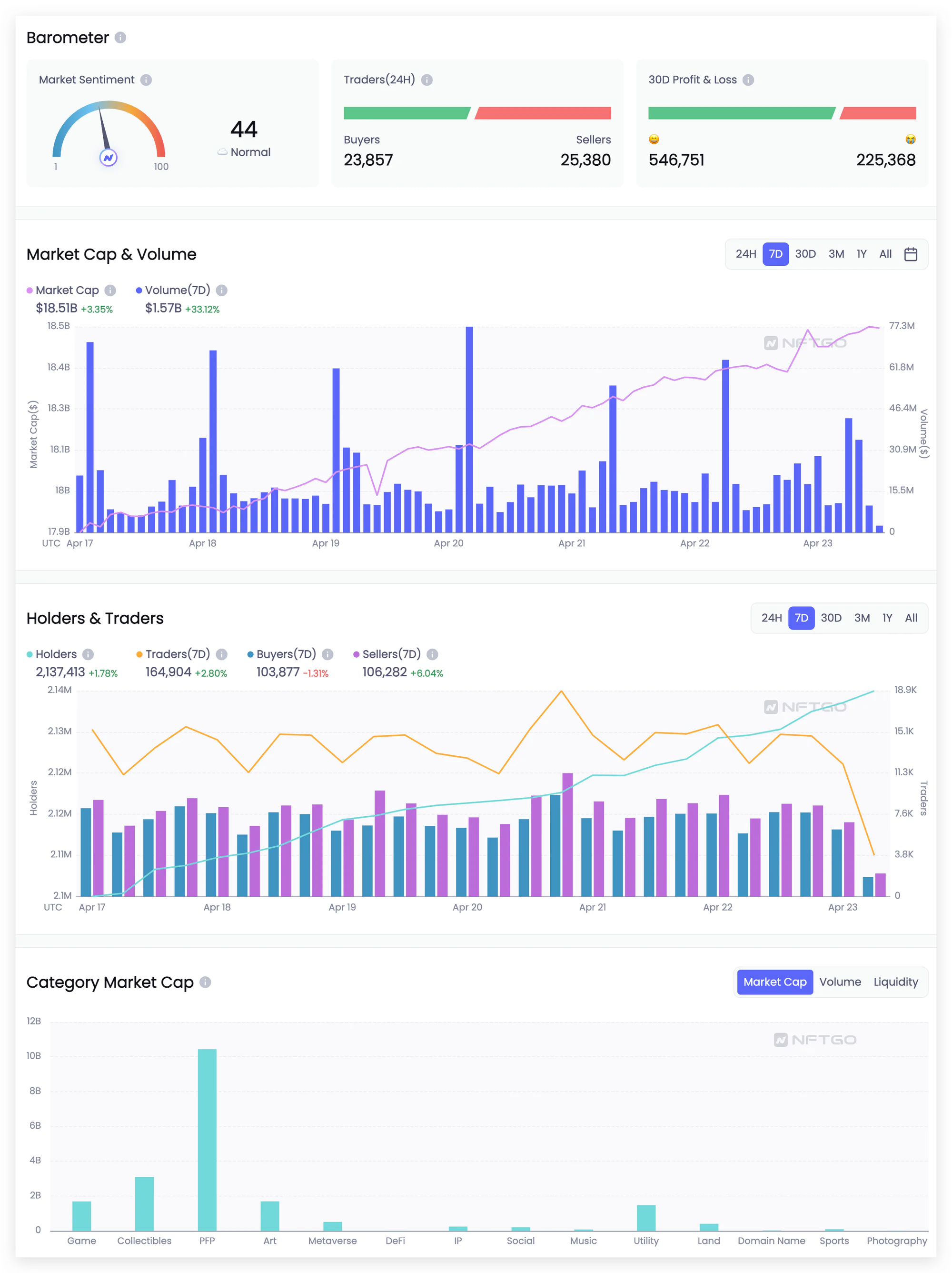
source: NFTGo
Protocol Total Revenue

source: Token Terminal